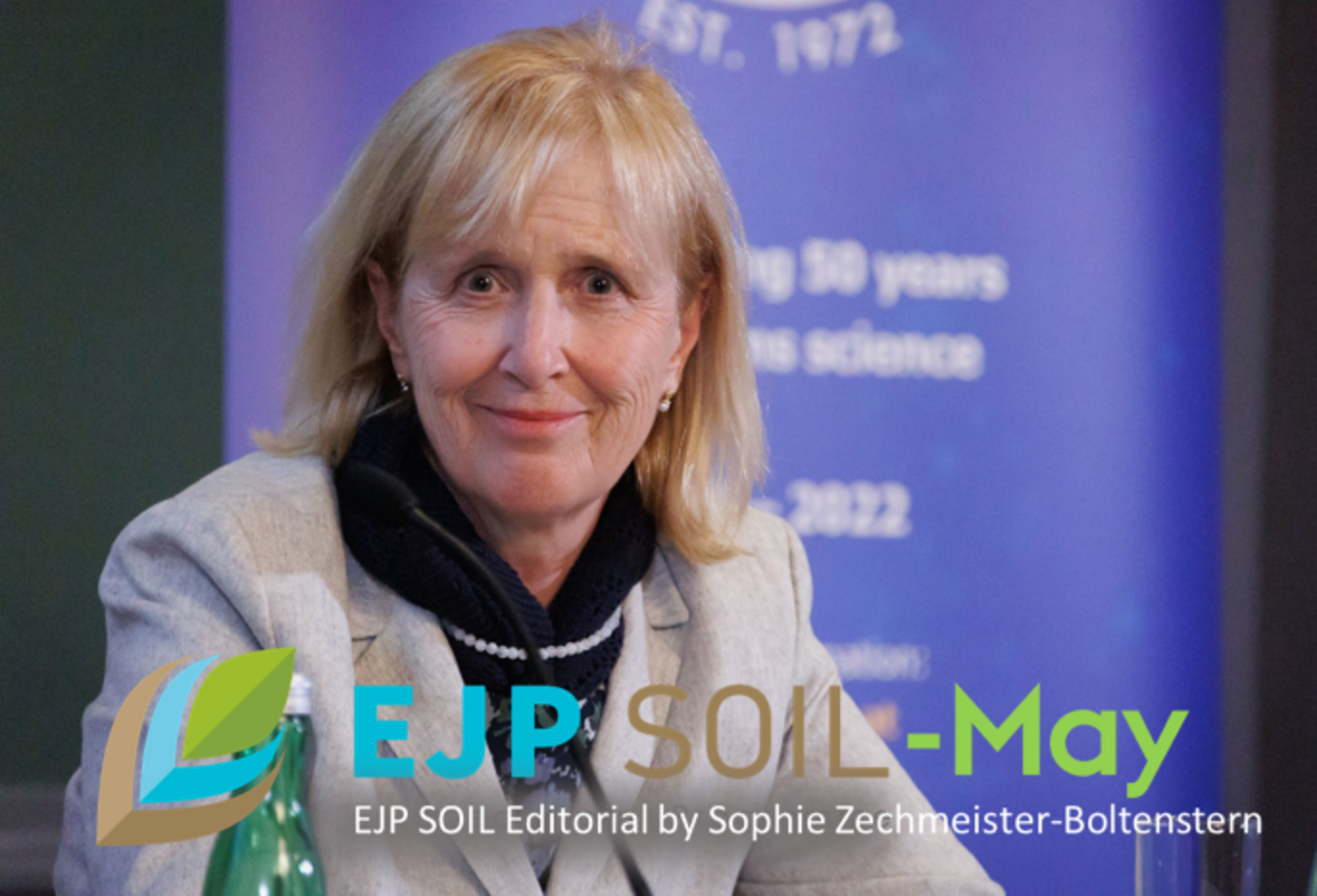EJP SOIL Newsletter editorial - May 2022 - by Sophie Zechmeister-Boltenstern
EJP SOIL is setting a benchmark in EU agriculture by providing comprehensive overviews and reports on the state of the art of various aspects of how soils can contribute to terrestrial carbon sequestration and potential climate change mitigation as well as climate change adaptation.

In July 2022, EJP SOIL will reach halftime. In many ways, our program is an endeavor of superlatives, for instance we are 950 scientists working together, on average this means 37 people by beneficiary varying from country to country. Despite of COVID-19, we have managed to create a very strong network of cooperation which includes also 218 Long-Term Experimental Sites (LTEs) on various soil management practices as well as 163 soil laboratories. Access to these sites and sample-, knowledge-, as well as data-exchange is promoted by unique calls for funding twice per year. The LTEs and soil laboratories networks offer an ideal platform for researchers to respond to global challenges, interpret early warning signal of ecological changes and threats, and provide potential solutions. These collaborations are highly valuable to combat climate change.
In April 2022, the IPCC published a further report of the AR6 WG III report on Mitigation of Climate Change. The bad news is that today it is highly unlikely to limit global warming to 1.5°C without carbon removal. The good news is that global warming can still be braked if we take immediate action. Predictions of modelled mitigation strategies to achieve the reductions of greenhouse gases (GHGs) anticipate the chance to limit warming to 2°C by including carbon dioxide removal (CDR), i.e. methods such as sequestering and storing carbon in trees and soil. Global cumulative CDR during 2020–2100 from the AFOLU (agriculture, forestry, and other landuse) sector is expected to contribute 10–250 GtCO2 net negative emissions. The recent reports of the IPCC make the research conducted in EJP SOIL even more relevant and a politically hot topic.
With our work, we are setting a benchmark in EU agriculture by providing comprehensive overviews and reports on the state of the art of various aspects of how soils can contribute to terrestrial carbon sequestration and potential climate change mitigation as well as climate change adaptation. The first peer-reviewed publication from EJP SOIL of Rodrigues et al. (2021) gives an overview on the soil carbon sequestration potentials in different countries. Here our experts predict a range of 0.1 to 27% annual reduction in national GHG emissions from the agricultural sector, which is more than earlier estimates. Another exciting finding is the advice of the CLIMASOMA project to prioritize and incentivize the implementation of a year-round soil cover: What a vision to travel through the countryside in winter and see only green fields! In our Work package on Synthesis, knowledge integration and access to infrastructure we aim at keeping track of such exciting news and at pointing them out to you.
In the upcoming Palermo meeting, we will arrange an open ranking of “Major innovations within EJP SOIL” where we invite you all to raise attention and indicate what you consider as most innovative results of our program. By this and by launching a special issue on “Climate-Smart Sustainable Soil Management for the Future” we intend to raise attention for our program and to reach even more scientists, policy makers, practitioners and members of the general public on top of the 680.000 citizens, which we already have reached so far. Looking forward to meeting you there either online or in person!
For more information:
Sophie Zechmeister-Boltenstern, Work Package 7 leader:Sophie.zechmeister@boku.ac.at
Reference:
Image: Copyright IIASA_M Silveri
Rodrigues, L., Hardy, B., Huyghebeart, B., Fohrafellner, J., Fornara, D., Barančíková,
G., Bárcena, T. G., De Boever, M., Di Bene, C., Feizienė, D., Kätterer, T., Laszlo, P., O’Sullivan, L., Seitz, D., & Leifeld, J. (2021). Achievable agricultural soil carbon sequestration across Europe from country-specific estimates. Global Change Biology, 27, 6363–6380. https://doi.org/10.1111/gcb.15897